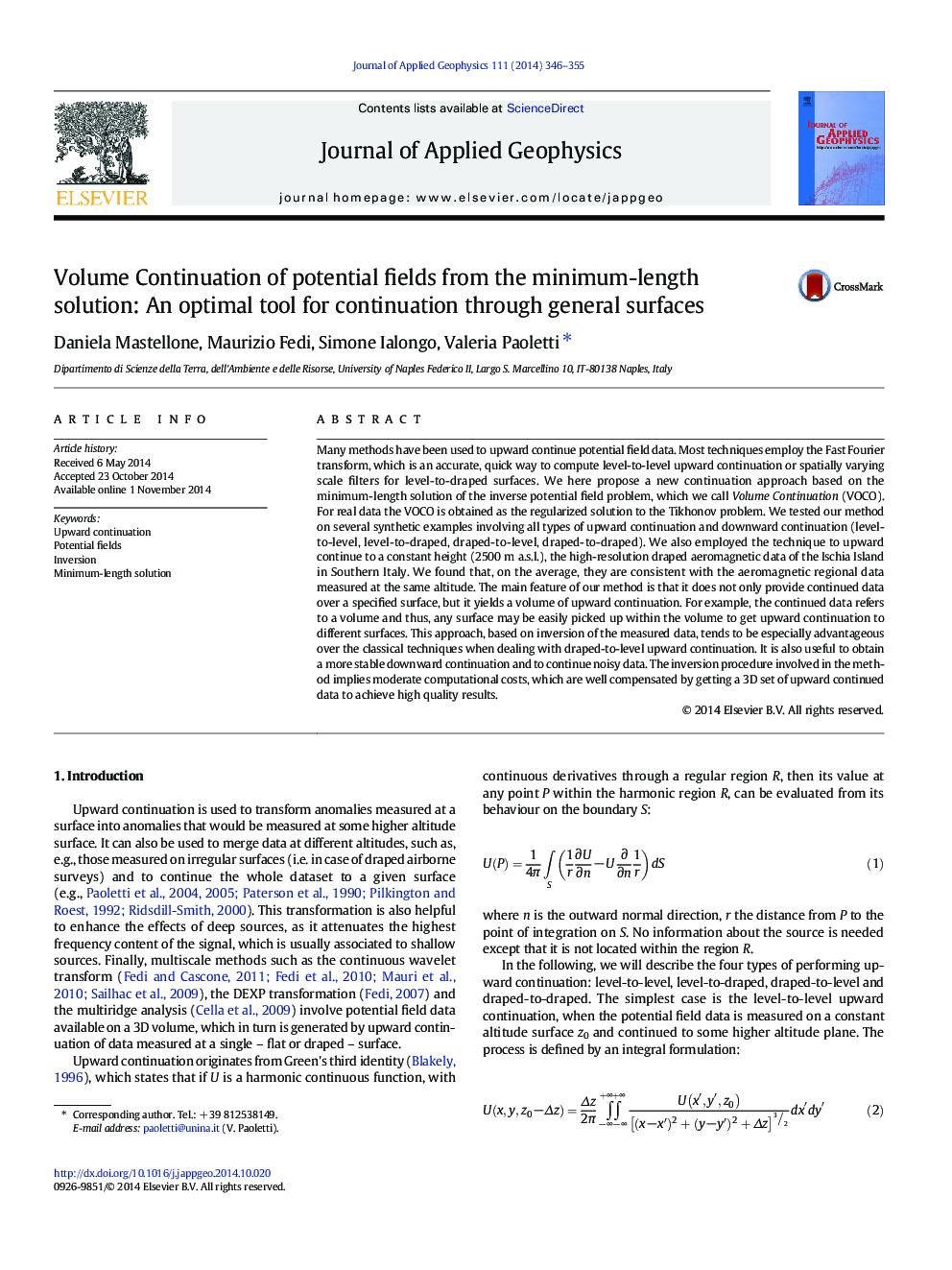| کد مقاله | کد نشریه | سال انتشار | مقاله انگلیسی | نسخه تمام متن |
|---|---|---|---|---|
| 4740116 | 1641140 | 2014 | 10 صفحه PDF | دانلود رایگان |
• A new approach to upward continue potential field data via the inversion solution.
• The method yields a Volume Upward Continuation from/to any kind of surface.
• The method can also yield stable downward continuation.
Many methods have been used to upward continue potential field data. Most techniques employ the Fast Fourier transform, which is an accurate, quick way to compute level-to-level upward continuation or spatially varying scale filters for level-to-draped surfaces. We here propose a new continuation approach based on the minimum-length solution of the inverse potential field problem, which we call Volume Continuation (VOCO). For real data the VOCO is obtained as the regularized solution to the Tikhonov problem. We tested our method on several synthetic examples involving all types of upward continuation and downward continuation (level-to-level, level-to-draped, draped-to-level, draped-to-draped). We also employed the technique to upward continue to a constant height (2500 m a.s.l.), the high-resolution draped aeromagnetic data of the Ischia Island in Southern Italy. We found that, on the average, they are consistent with the aeromagnetic regional data measured at the same altitude. The main feature of our method is that it does not only provide continued data over a specified surface, but it yields a volume of upward continuation. For example, the continued data refers to a volume and thus, any surface may be easily picked up within the volume to get upward continuation to different surfaces. This approach, based on inversion of the measured data, tends to be especially advantageous over the classical techniques when dealing with draped-to-level upward continuation. It is also useful to obtain a more stable downward continuation and to continue noisy data. The inversion procedure involved in the method implies moderate computational costs, which are well compensated by getting a 3D set of upward continued data to achieve high quality results.
Journal: Journal of Applied Geophysics - Volume 111, December 2014, Pages 346–355
